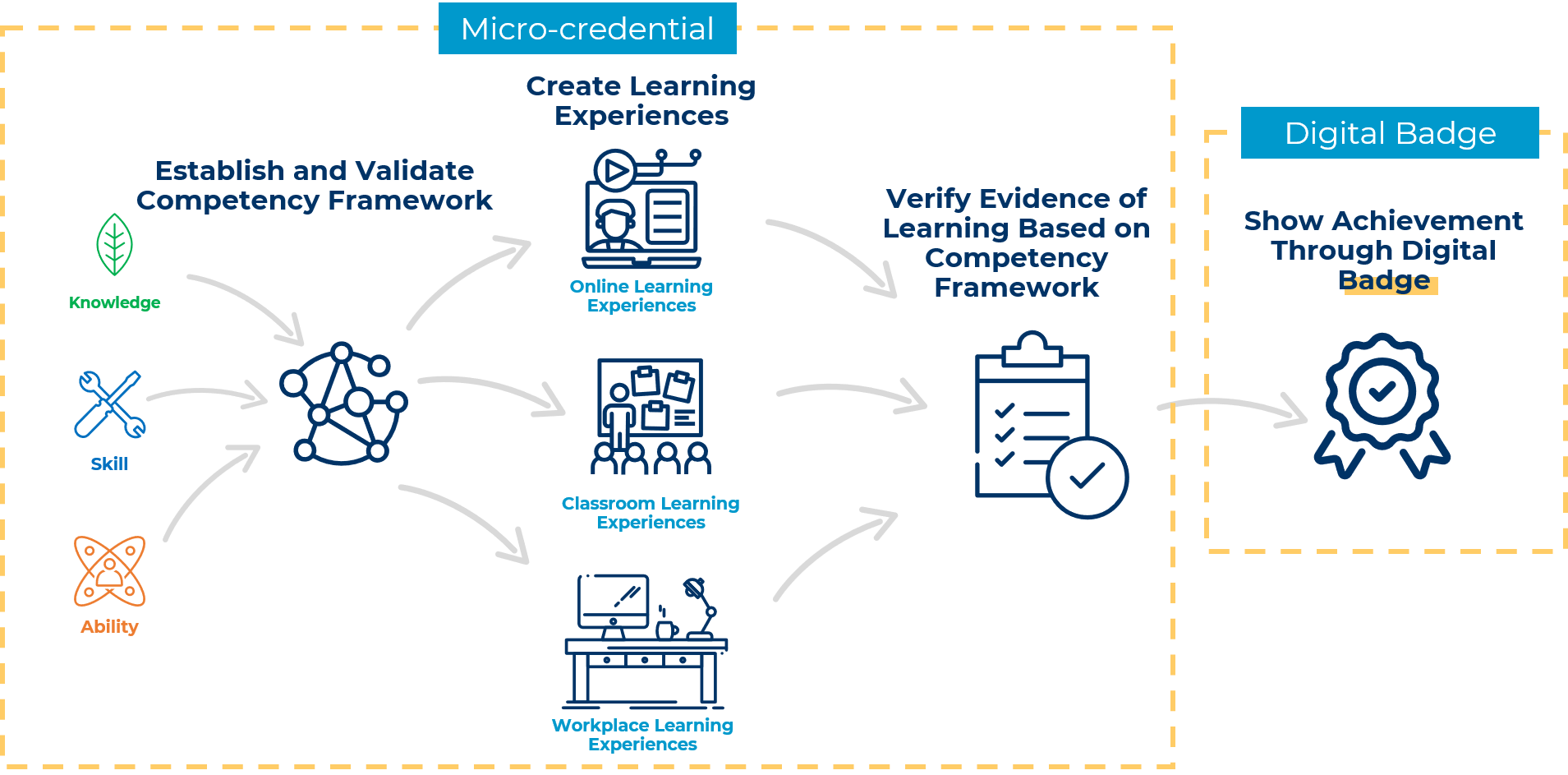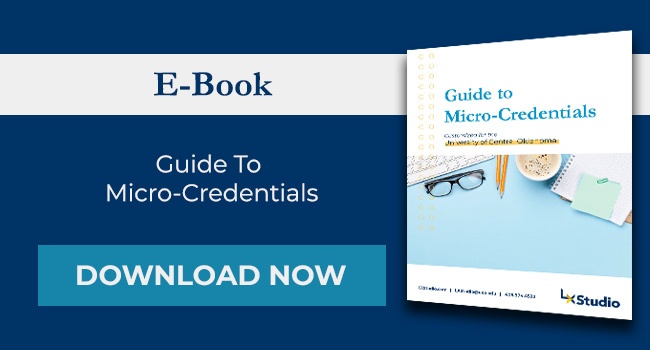
How To Build Micro-Credentials For Your Association
Have you ever had the feeling you are creating something just for the sake of checking off a box on your to-do list?
This might relate to creating new learning programs or trainings that may not have a strong interest or participation rate by your members.
To combat these issues, it is imperative to design purposeful micro-credentials for your association and membership to enhance learning in your organization.
Focus on designing for specific targeted skills rather than generalized topics that other organizations are creating.
You should also pay special attention in not giving someone a digital badge because they attended a training but measuring whether they actually learned the content you were teaching.
Knowledge, Skills and Abilities
When considering a new micro-credential, remember you should keep the scope more focused or specialized rather than broad to set your organization apart from the marketplace.
There are three components to include in your competency based micro-credential: knowledge, skills and abilities.
Knowledge: "I know about something."
Knowledge is the understanding of concepts rather than the application.
Think of the concepts, topics, theories, or subjects the person should know to earn the credential.
Skills: “I can perform a certain task."
Skills are the capabilities developed through workshops, trainings, and hands on activities.
Think of the measurable proficiencies someone can observe to determine whether the learner has earned the credential.
Abilities: "I can use numerous talents and/or innate traits together to accomplish something."
Sometimes confused with skills, abilities are developed through experience and applying skills to real world problems or situations.
Think of the capability someone has to apply skills and knowledge to a task.
KSAs often have wide-ranging definitions and examples as they are used in a variety of capacities and situations.
For further information about the differences between knowledge, skills and abilities take a look at these articles from Future Learn and HR Bartender.

How To Build A Micro-Credential Strategy
As a reminder, the 4 Team Members You Need to Build a Micro-Credential include the sponsor, designer, verifier, and issuer.
After assembling your micro-credential design team, you can then begin the design process by following the steps below.
Co-design:
First, begin with co-designing the micro-credential with education and industry experts.
You will do this by completing a vision and design strategy for the offering.
Then create an empathy map to learn more about the specific audiences who will be completing this offering.
Validate
Before moving onto the curriculum writing and offering development, you will need to validate the micro-credential using education and workforce data.
Does this offering make sense in the marketplace? Who are your competitors? What opportunities are there for this type of offering?
Once you have completed this step you can determine whether the offering can move forward to development and implementation or if it needs to go back to the co-design phase and reworked with a new focus.
Validating the micro-credential prior to development helps not only the co-designers by informing them if there is interest in the industry for the specific offering, but also the learner themselves as the value of the offering increases due to the unique and intentional design.
Verify
The third phase of the micro-credential process is to verify learning achievement through pre-determined evidence such as a skill demonstration, test, writing assignment, portfolio, or other assessments.
This phase is what sets apart a micro-credential from your average training, workshop, or event because it measures whether the leaner has actually accomplished the knowledge, skill or ability rather than they just simply attended the session.
Without the verification step, the micro-credential offering has no validity in the space.
Issue
Finally, the last phase is to issue the digital micro-credential through a digital badge software like Badgr or Credly.
Once the micro-credential has been issued to the learner, they will be able to showcase this new knowledge, skill and ability by linking it to their social media platforms and adding it to their e-portfolio and resume.
If you're interested in learning more about the micro-credential strategy and design process, please download our latest e-book!






